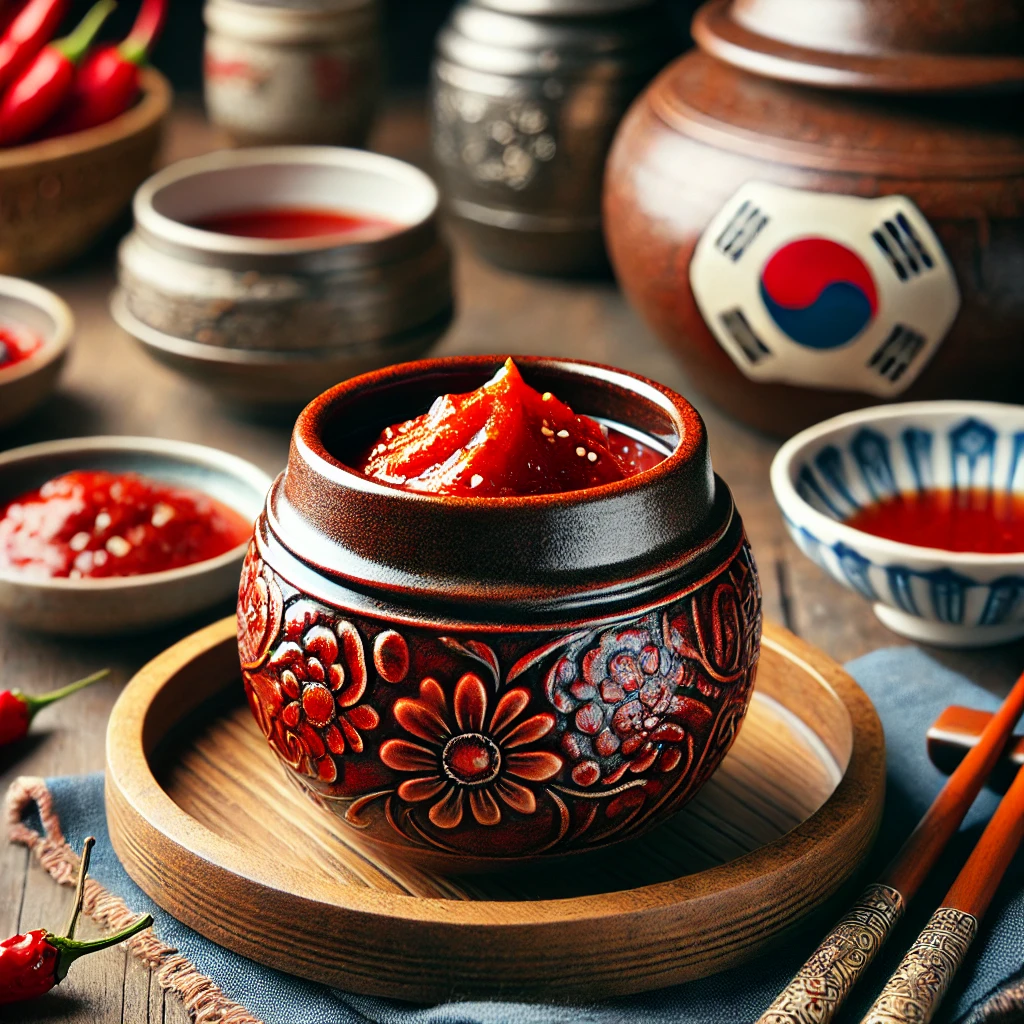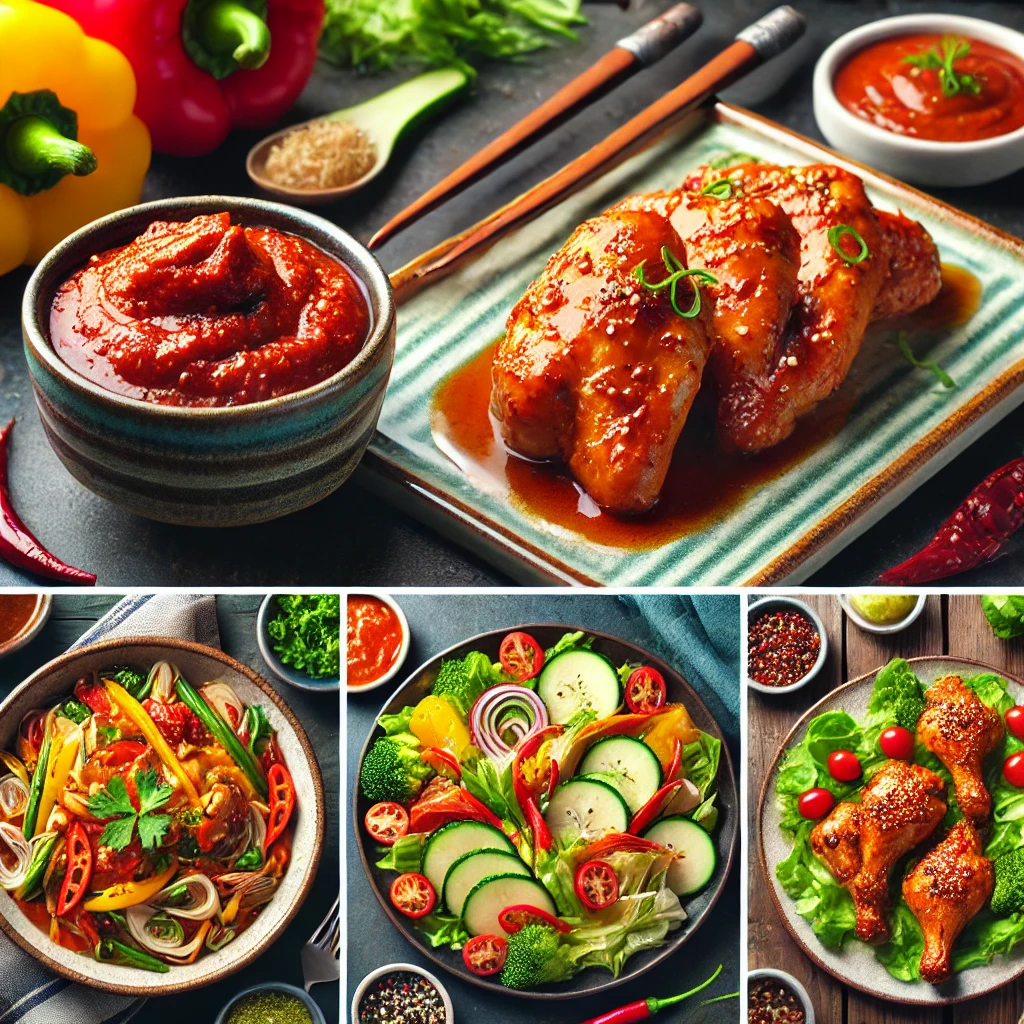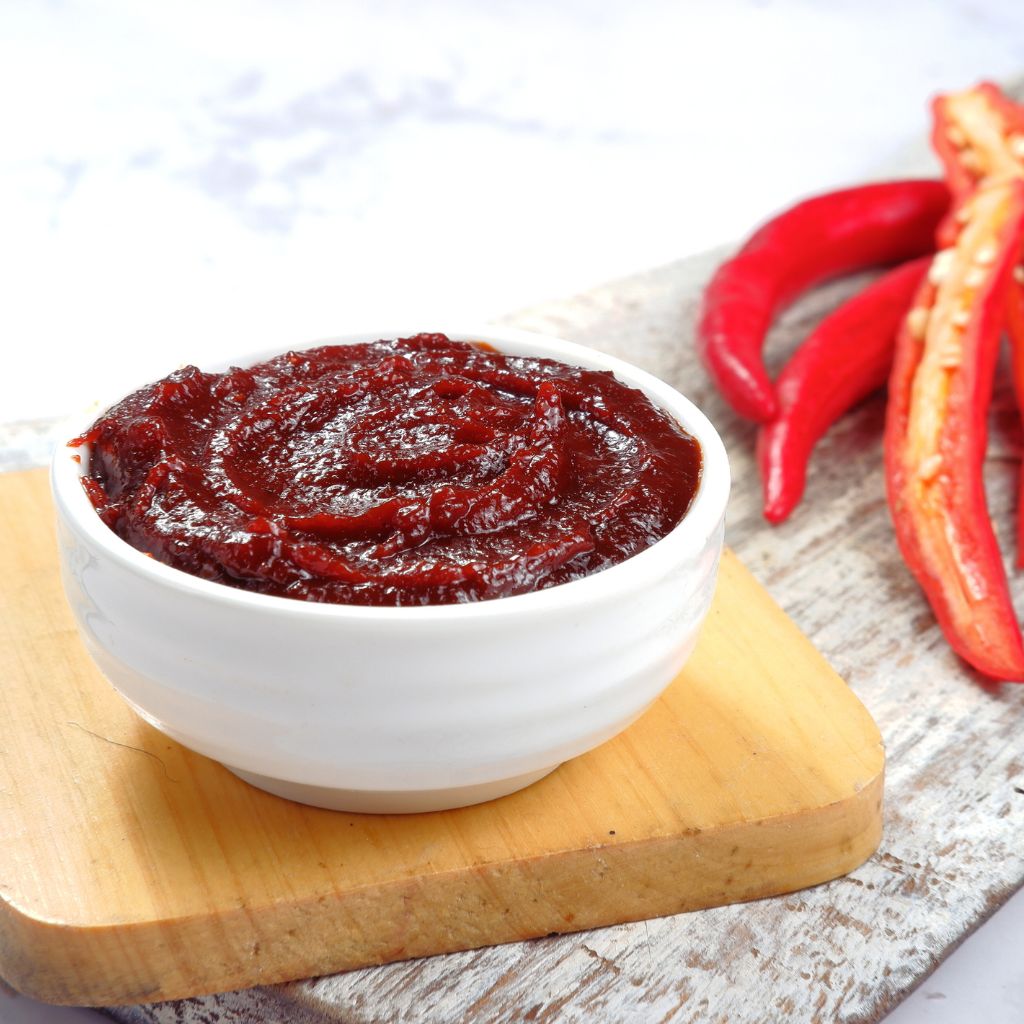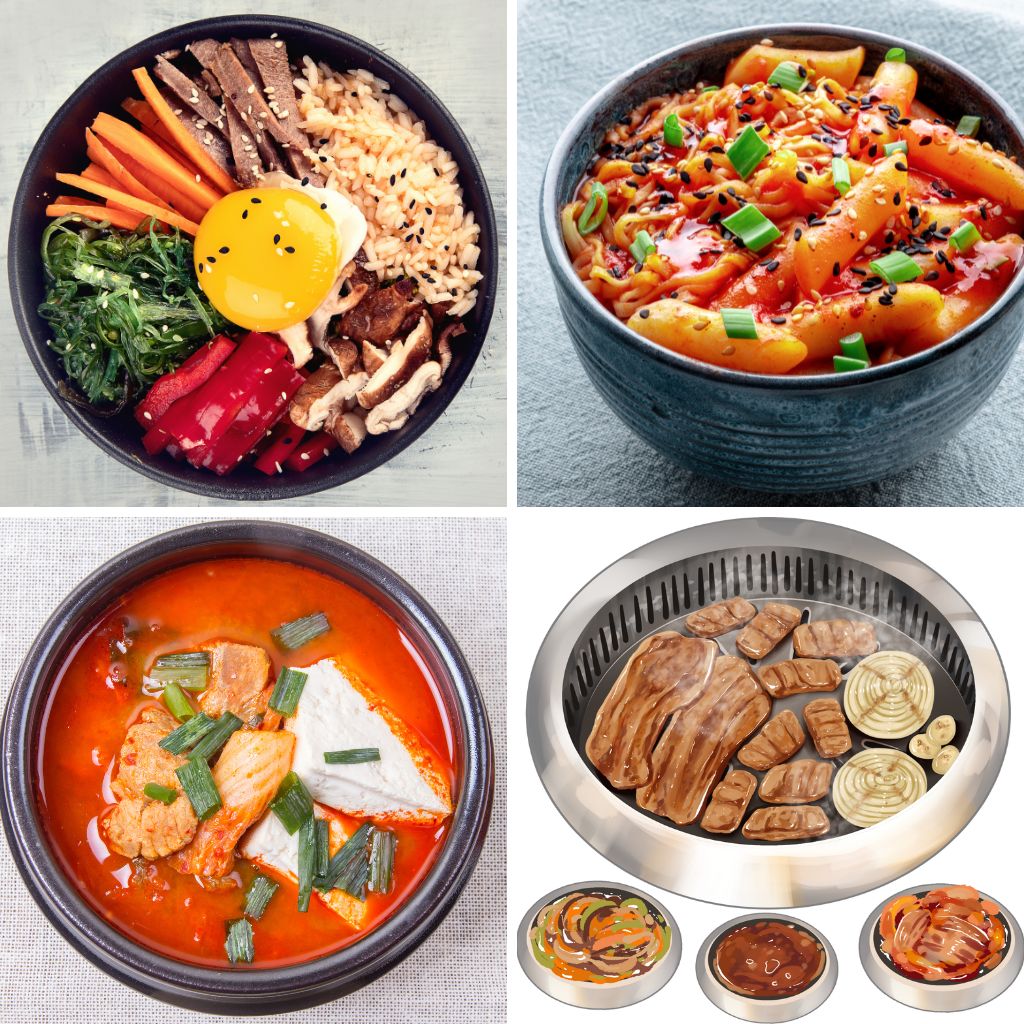Welcome to the world of gochujang, the vibrant, flavorful, and slightly mysterious Korean chili paste that has taken the culinary world by storm. If you’ve ever wondered how to use gochujang or been curious about what makes this sauce so special, you’re in the right place. In this comprehensive guide, we’ll explore the origins of gochujang, delve into its unique ingredients, and provide you with tips, recipes, and storage advice to make this versatile condiment a staple in your kitchen. Get ready to discover the magic of gochujang and how to use it in your everyday cooking!
What is Gochujang? Understanding the Korean Flavor Sensation

Gochujang is a traditional Korean fermented chili paste that combines spicy, sweet, and savory flavors in one harmonious blend. This deep red paste, made from chili powder, glutinous rice, fermented soybeans, and salt, creates a rich, complex taste that can elevate any dish. It’s a key ingredient in Korean cuisine, often used to add depth and heat to stews, marinades, and sauces.
Key Ingredients of Gochujang
| Ingredient | Description | Flavor Contribution |
|---|---|---|
| Chili Powder | Made from Korean red chili peppers | Provides spiciness |
| Glutinous Rice | Also known as sweet rice | Adds a subtle sweetness |
| Fermented Soybeans | Fermented to develop rich umami flavors | Contributes to depth and umami |
| Salt | Essential for preserving and balancing flavors | Balances the overall taste |
The History of Gochujang: From Ancient Korea to Modern Kitchens
The history of gochujang dates back to the 18th century, during the Joseon Dynasty, although some records suggest its existence even earlier. Traditionally, people made gochujang at home and stored it in earthenware pots called “onggi,” which they kept outdoors to ferment. This fermentation process, lasting several months, was crucial in developing the paste’s characteristic depth and complexity.
As Korean cuisine gained popularity worldwide, gochujang began to appear in international kitchens. Today, you can find gochujang in most grocery stores, often in the Asian foods section, and chefs and home cooks alike use it to bring a touch of Korean flavor to a wide range of dishes.
Gochujang Ingredients: What Makes This Sauce So Special?
The magic of gochujang lies in its simple yet powerful ingredients. Let’s dive deeper into what makes this sauce so special:
Chili Powder
Korean chili powder, known as “gochugaru,” provides a mild to moderate spiciness with a slightly smoky flavor. It is less fiery than other chili powders, making it perfect for a balanced heat.
Glutinous Rice
Glutinous rice, also known as sweet rice, contributes to the paste’s thick texture and subtle sweetness. It helps balance the heat from the chili powder and the umami from the fermented soybeans.
Fermented Soybeans
Fermented soybeans add a rich umami flavor essential for the fermentation process. They enhance the depth and complexity of the gochujang.
Salt
Salt is used to preserve the paste and balance the flavors. It ensures the gochujang stays fresh and flavorful throughout its shelf life.
How to Use Gochujang: Tips for Incorporating It into Your Meals

Wondering how to use gochujang in your cooking? Here are some tips to get you started:
Marinades
Mix gochujang with soy sauce, garlic, and ginger for a flavorful marinade for meats and vegetables. This combination works perfectly for grilling or roasting.
Soups and Stews
Add a spoonful of gochujang to broths for an extra kick of flavor and heat. It enriches the taste of dishes like kimchi jjigae and doenjang jjigae.
Stir-Fries
Stir a bit of gochujang into your stir-fry sauces to give them a spicy and savory boost. It’s an excellent way to elevate simple vegetable or meat stir-fries.
Dips and Sauces
Combine gochujang with mayonnaise or yogurt for a spicy dipping sauce perfect for fries or vegetables. It also makes a great topping for burgers and sandwiches.
Salad Dressings
Whisk gochujang into vinaigrettes for a unique, spicy-sweet salad dressing. It pairs well with hearty greens and roasted vegetables.
Creating the Perfect Gochujang Sauce: A Step-by-Step Guide

Making your own gochujang sauce at home is easier than you might think. Here’s a simple recipe to try:
Ingredients
- 1/4 cup gochujang
- 2 tablespoons soy sauce
- 1 tablespoon sesame oil
- 1 tablespoon rice vinegar
- 1 tablespoon honey or sugar
- 2 cloves garlic, minced
Instructions
- In a bowl, combine all the ingredients.
- Whisk until smooth and well-blended.
- Adjust the sweetness or saltiness to taste.
- Use immediately or store in an airtight container in the refrigerator for up to a week.
This versatile sauce can be used as a marinade, a dip, or a dressing, adding a burst of Korean flavor to any dish.
Gochujang in Traditional Korean Dishes: Classic Recipes to Try

Gochujang is a staple in many traditional Korean dishes. Here are some classic recipes to try:
Bibimbap
A mixed rice dish topped with vegetables, meat, and a fried egg, all brought together with a generous dollop of gochujang.
Tteokbokki
Spicy rice cakes simmered in a gochujang-based sauce, often served as street food in Korea.
Kimchi Jjigae
A hearty stew made with kimchi, tofu, pork, and gochujang, perfect for a comforting meal.
Samgyeopsal
Korean BBQ pork belly grilled at the table and served with a gochujang dipping sauce.
These recipes showcase the versatility of gochujang and its ability to enhance a wide range of flavors.
How to Use Gochujang in Fusion Cuisine: Innovative Recipe Ideas
Gochujang’s unique flavor profile makes it an excellent ingredient for fusion cuisine. Here are some innovative ways to incorporate gochujang into non-traditional dishes:
Gochujang Tacos
Spice up your tacos with gochujang-marinated meats and a gochujang-based sauce.
Gochujang Burgers
Mix gochujang into your burger patties or use it as a spicy sauce.
Gochujang Pasta
Add a spoonful of gochujang to your pasta sauce for a spicy, umami twist.
Gochujang Pizza
Drizzle gochujang sauce over your pizza for an extra kick.
Gochujang Glazed Salmon
Brush gochujang sauce over salmon fillets before baking for a flavorful glaze.
These fusion recipes highlight gochujang’s versatility and its ability to elevate various cuisines.
Health Benefits of Gochujang: Why You Should Add It to Your Diet
Gochujang isn’t just delicious; it’s also packed with health benefits. Here are some reasons to add gochujang to your diet:
Rich in Probiotics
The fermentation process introduces beneficial bacteria that support gut health.
Low in Fat
Gochujang is a low-fat condiment, making it a healthier alternative to many sauces.
High in Vitamins and Minerals
It contains vitamins A and C, as well as minerals like iron and calcium.
Boosts Metabolism
The capsaicin in chili peppers can help boost metabolism and aid in weight loss.
By incorporating gochujang into your meals, you can enjoy these health benefits while adding delicious flavor to your dishes.
How to Use Gochujang for Meal Prep: Easy and Delicious Ideas
Meal prep can be a breeze with gochujang. Here are some ideas to help you incorporate gochujang into your meal prep routine:
Marinate Proteins
Marinate chicken, beef, or tofu in a gochujang sauce and cook in batches for easy meals throughout the week.
Stir-Fry Kits
Pre-chop vegetables and protein, then toss with a gochujang stir-fry sauce for a quick meal.
Rice Bowls
Prepare rice and top with a variety of vegetables, protein, and a drizzle of gochujang sauce for a balanced meal.
Salad Jars
Layer your favorite salad ingredients in a jar and top with a gochujang-based dressing for a spicy twist.
Freezer Meals
Prepare gochujang-based stews or soups and freeze in portions for easy reheating.
These meal prep ideas can help you save time while keeping your meals exciting and flavorful.
Gochujang Storage Tips: How to Keep Your Sauce Fresh and Flavorful
Proper storage is essential to maintain the freshness and flavor of gochujang. Here are some tips:
Refrigeration
Always store gochujang in the refrigerator after opening. The cool temperature slows down fermentation, preserving its flavor.
Airtight Containers
Use airtight containers to prevent air and moisture from getting in, which can affect the paste’s quality.
Use Clean Utensils
Always use clean utensils to scoop out gochujang to avoid contamination.
Check for Mold
If you notice mold or an off smell, it’s best to discard the paste.
By following these storage tips, you can ensure your gochujang stays fresh and flavorful for months.
Conclusion
Gochujang is more than just a spicy condiment; it’s a gateway to the rich and diverse flavors of Korean cuisine. Whether you’re a food enthusiast, a health-conscious eater, or a home cook looking to spice up your meals, learning how to use gochujang can open up a world of culinary possibilities. From traditional Korean dishes to innovative fusion recipes, the versatility of gochujang ensures that it will become a beloved staple in your kitchen. Embrace the magic of gochujang and enjoy the journey of flavor it brings to your everyday cooking!
FAQs About Gochujang
What is gochujang?
Gochujang is a traditional Korean fermented chili paste made from chili powder, glutinous rice, fermented soybeans, and salt. It has a rich, complex flavor that is both spicy and slightly sweet.
How do I use gochujang in cooking?
You can use gochujang in a variety of ways, including as a marinade for meats, a flavor enhancer in soups and stews, a spicy addition to stir-fries, a component in dips and sauces, and a unique ingredient in salad dressings.
What are the health benefits of gochujang?
Gochujang offers several health benefits, including being rich in probiotics from the fermentation process, low in fat, high in vitamins and minerals, and containing capsaicin, which can help boost metabolism and aid in weight loss.
How should I store gochujang?
After opening, store gochujang in the refrigerator in an airtight container. This helps maintain its freshness and flavor by slowing down the fermentation process.
Can I make my own gochujang sauce?
Yes, you can easily make your own gochujang sauce at home. Combine gochujang with soy sauce, sesame oil, rice vinegar, honey or sugar, and minced garlic for a versatile sauce that can be used in many dishes.
What traditional Korean dishes use gochujang?
Some traditional Korean dishes that use gochujang include bibimbap, tteokbokki, kimchi jjigae, and samgyeopsal. These dishes highlight the unique flavor and versatility of gochujang.
Can I use gochujang in non-Korean recipes?
Absolutely! Gochujang can be incorporated into a variety of fusion dishes, such as tacos, burgers, pasta, pizza, and glazed salmon. Its unique flavor profile makes it a versatile ingredient for many cuisines.
Is gochujang spicy?
Gochujang has a moderate level of spiciness, which can vary depending on the brand and the amount of chili powder used. It is generally less spicy than other chili pastes and offers a balanced heat with sweet and savory notes.
Where can I buy gochujang?
You can find gochujang in most grocery stores, typically in the Asian foods section. It is also available online through various retailers.
How long does gochujang last once opened?
When stored properly in the refrigerator, gochujang can last for several months. Always check for signs of mold or an off smell before use to ensure it is still good.





2 Comments
Pingback: How to Make a Delicious Fricassee Cake: A Step-by-Step Guide
Pingback: Easy Buffalo Chicken Mac and Cheese Crock Pot Recipe